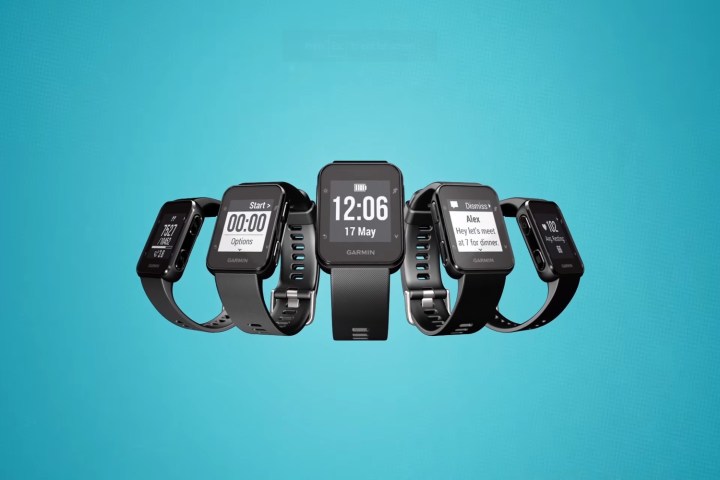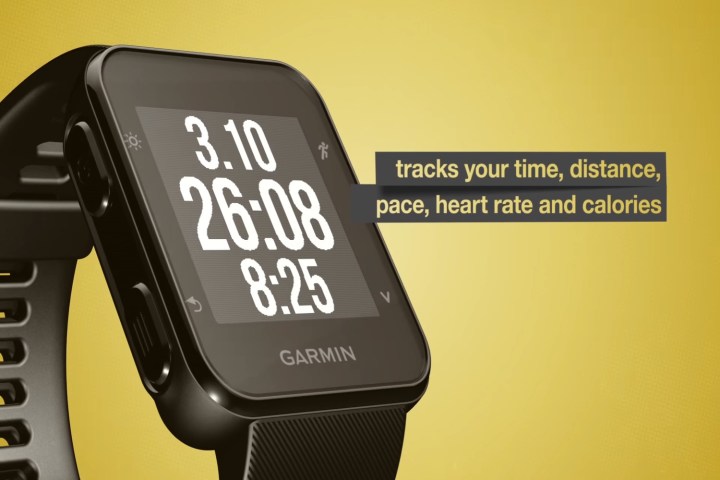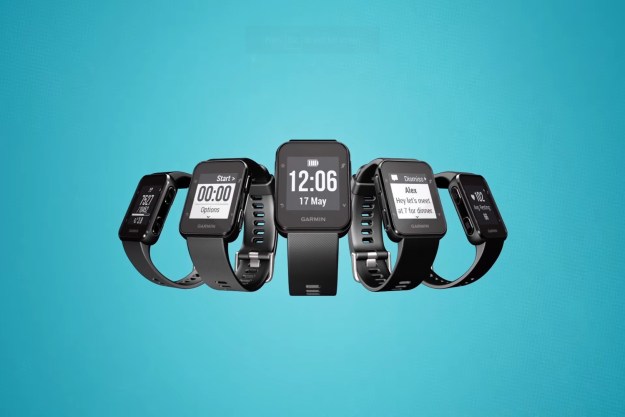
And now, a multitude of follow-ups and a luxury smartwatch later, the company is back with a new wearable, the Forerunner 35, that sports a vivid display, heart rate monitor, and long-lasting battery.
The Forerunner 35 is the company’s fourth fitness tracker in recent months after the Forerunner 735XT, Vivomove, Vivosmart HR+, and Approach X40 golf tracker, and it shares much in common with its newfound brethren. It counts steps with a built-in pedometer, uses GPS to keep track of the distances you’ve traversed, taps an accelerometer to record your pace, and crunches all those numbers to estimate the number of calories you’ve burned and determine the intensity of your workouts.
There’s a heart rate monitor that keeps constant watch of your pulse during workouts. And paired with an Android phone or iPhone, the Forerunner surfaces playback controls when you play a song or podcast and notifies you of incoming calls, texts, social media updates, and e-mails.

But there’s more to the Forerunner 35 than meets the eye. During workouts, the fitness tracker notifies you with vibrations and an audible chime when you fall behind your target pace. It automatically measures laps and pauses fitness tracking when it detects you’ve stopped to take a breather, and marks personal records — the longest distance you’ve walked, for instance, and the fastest you’ve run.
The Forerunner 35 also tracks your sleep, and sport custom profiles for activities like walking, biking, and running (but not swimming). And it syncs all that information with Garmin’s Connect companion app for posterity.
As for the hardware, it isn’t half bad. The Forerunner 35’s display is a high-contrast model that’s resistant to bumps and scratches, and the power pack is capable of lasting up to nine days with all but the pedometer disabled or up to 13 hours with most of the components (including GPS and the heart rate monitor) switched on. And it sports a slim, watertight shell that’s resistant to leakage up to depths of 50 meters (164 feet).

But perhaps most impressive of all is the Forerunner 35’s price point. At $200, it’s the least expensive of Garmin’s fitness trackers to feature its eponymous Garmin Elevate GPS and heart rate tech. That may not be quite as cheap as Sony’s comparably outfitted SmartWatch 3, which is shipping for around $150, but given Garmin’s expertise in the fitness-tracking space, it may be the better buy for, say, aspiring marathoners.
Garmin said the Forerunner 35 will ship sometime this fall, and will come in four colors when it does: black, limelight, frost blue, and white.
Editors' Recommendations
- I wore the Whoop 4.0 fitness tracker for a month. Here’s why I’m getting rid of it
- You shouldn’t need an accountant to buy a new fitness tracker
- Garmin’s $150 Vivosmart 5 fitness band has some stiff competition
- Amazon’s new Halo fitness tracker offers body scanning, voice analysis, and more
- Xiaomi Mi Smart Band 4 impressions: All the fitness tracker you need

